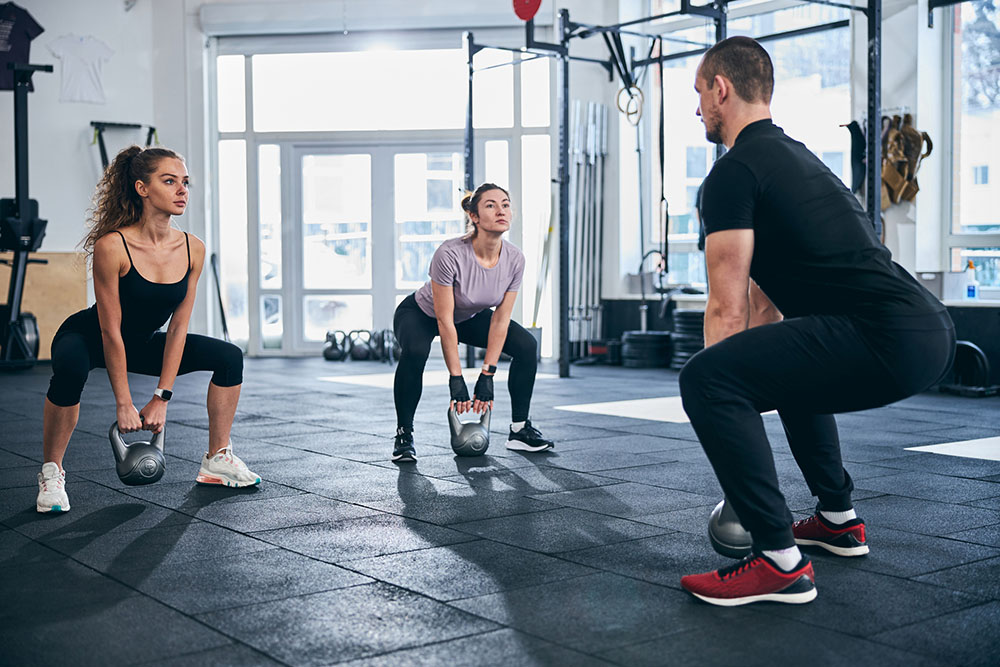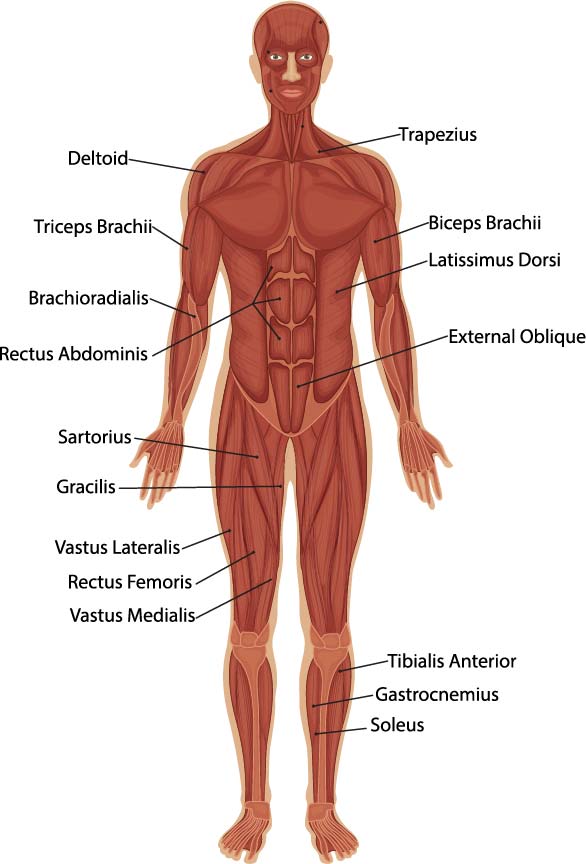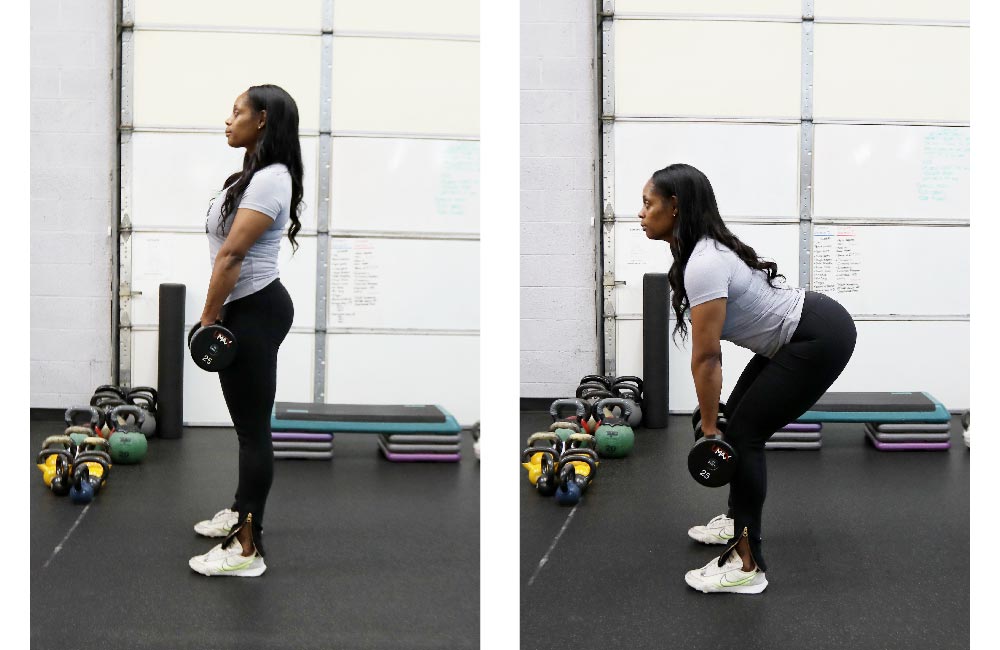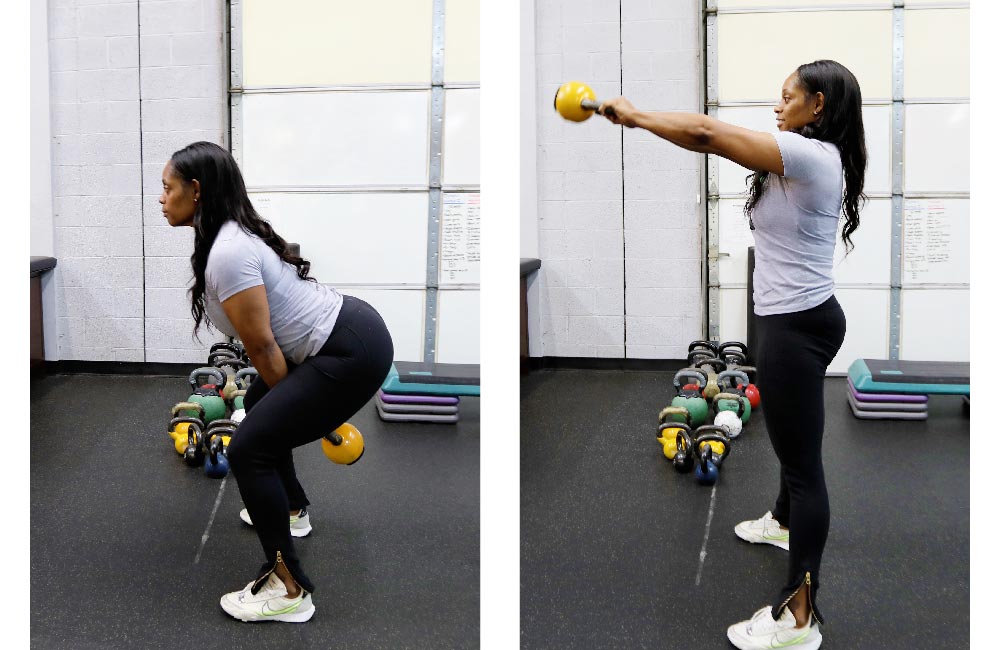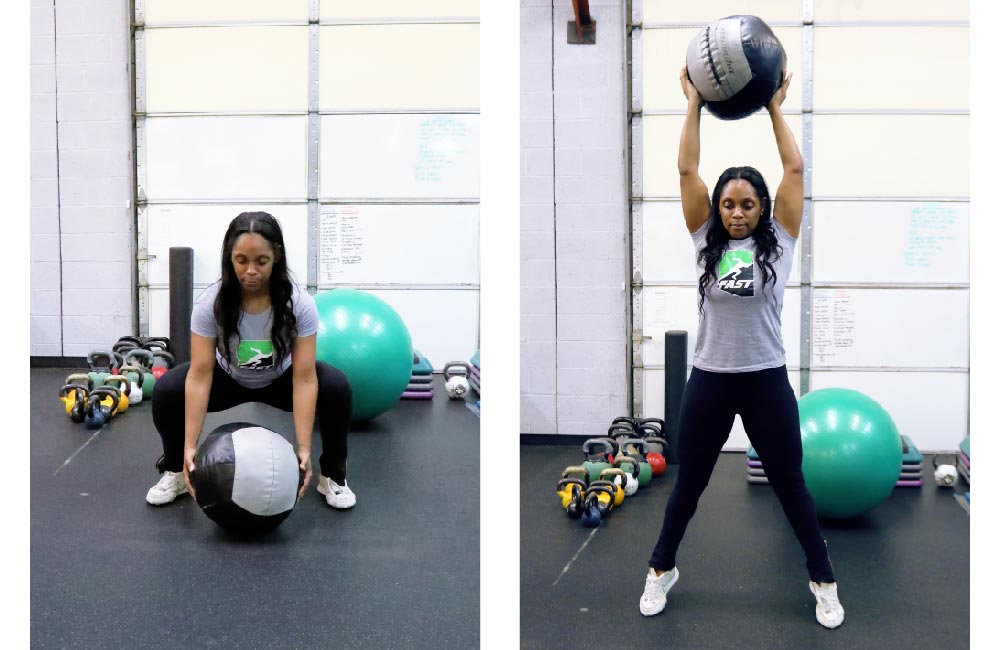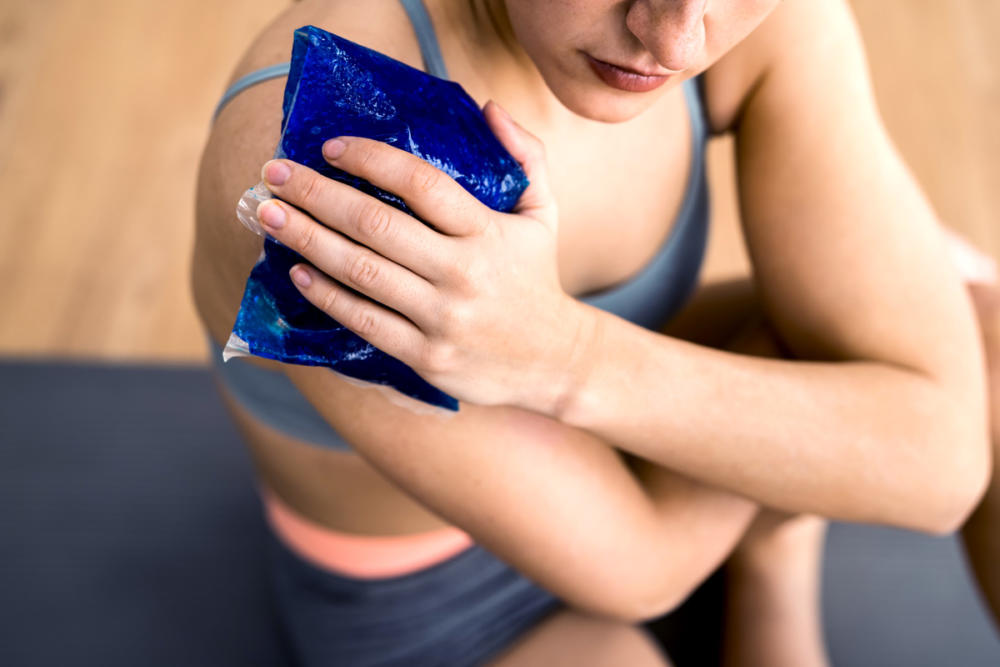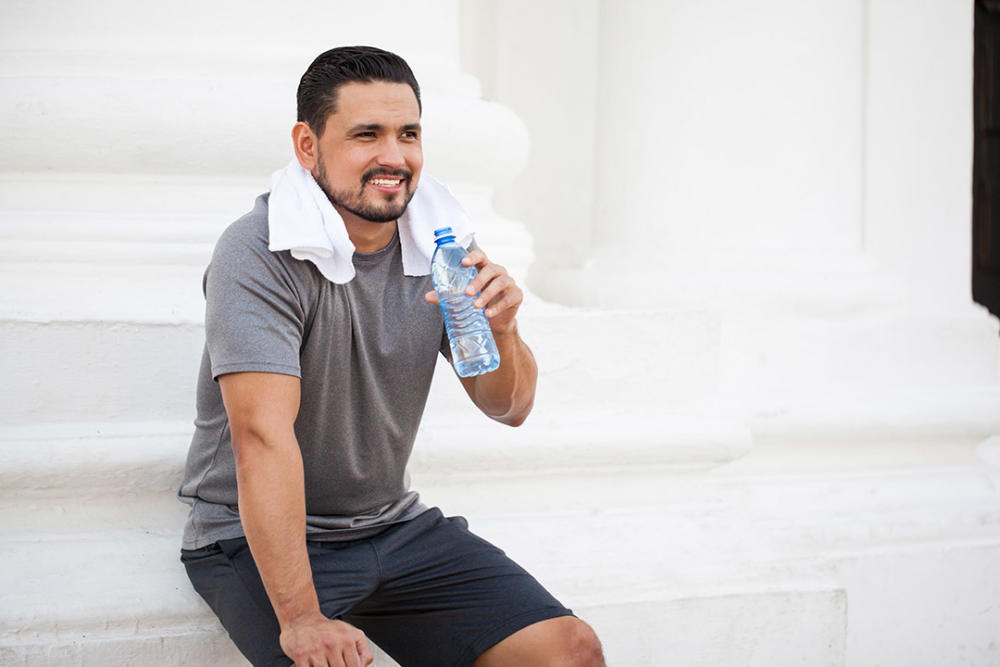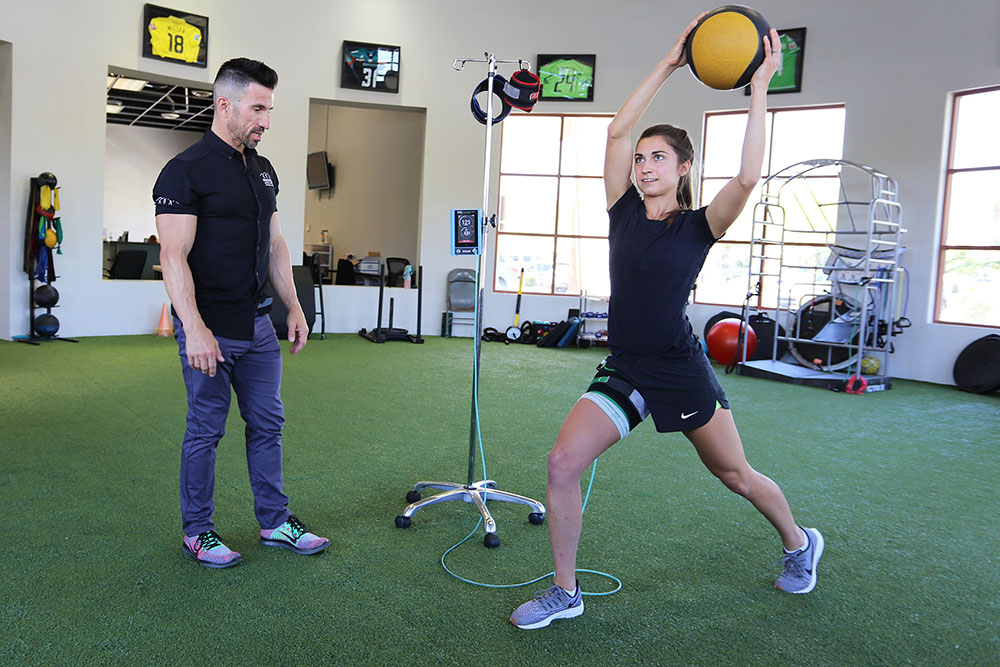by Taryn Norwood
CPT, CNC, NASM-SFC FAST East Scottsdale
The posterior chain may not be as glamorous as your biceps or pecs, but these muscles make up a key muscle group for strengthening and training. To establish an optimal fitness and exercise regimen, it is essential to understand how to improve strength in the posterior chain, especially as we age.
With a stronger posterior chain, you can enjoy greater stability and balance, strength, and athletic performance while reducing the risk of injury. Below we’ll cover the anatomy of the posterior chain and 5 of the best exercises and stretches to improve strength.
What is the posterior chain?
Before examining the exercises to strengthen it, you must understand the posterior chain. As the name implies, it is a linked set of muscles on the backside of your body. Specifically, the major posterior chain muscles are the following.
- Trapezius (upper, middle, and lower)
- Posterior deltoids
- Rhomboids
- Latissimus dorsi
- Erector spinae
- Transverse abdominus
- Glutes (Maximus and Medius)
- Hamstrings
- Calves
In other words, your posterior chain is all the major muscles extending from your neck to your heels. These muscles are a chain because they work together to help you move. Other muscles in the chain will also engage whenever one of them is activated. The full chain is activated simultaneously in many everyday or athletic movements.
Benefits of Strengthening Posterior Chain Muscles
Given the extensive area covered by the posterior chain, it is probably no surprise that it plays an essential role in your stability, agility, and flexibility. The good news is that you are almost already working on posterior chain muscles. Almost any exercise will help strengthen these muscles. However, it is good to use exercises that activate the full chain (or most of it) at once. These can help your posterior muscles to work together more effectively, yielding the best results.
Best Exercises to Develop Posterior Chain Strength
There are lots of great exercises that can help with your posterior chain. Before you do any of them, however, you need to warm up and stretch. Get your body moving. Stretches such as the sumo squat, mountain climber, downward dog, and lying sphinx can help you get ready to work out.
1. Romanian Deadlift – A Romanian deadlift is like a regular deadlift, except you start from a standing position. It can be done with a barbell or dumbbells.
- Stand straight, grasping your weights at hip level (it is a good idea to have your weights supported on a rack at this height before you start, especially if using a barbell).
- With a firm grip, brace your core and bend your hips back.
- Keep your head, spine, and pelvis aligned while gradually lowering the weight down the front of your body. You can bend your knees slightly to help keep your back aligned.
- Once you feel a stretch in your hamstrings, stand back up and repeat.
2. Kettlebell Swings – When executed correctly, kettlebell swings train your body to generate a lot of lower body power.
- Place a kettlebell on the floor and stand with your feet shoulder-width apart. Reach down at the hips to grasp the kettlebell handle.
- Keeping your back aligned, hike the kettlebell backward.
- As your wrists touch your thighs, push up with your legs, core, and torso so that the kettlebell swings forward.
- Allow momentum to carry the weight up and then back between your legs.
- Use explosive movements to keep the weight moving.
3. Cable Pull-Through – Sometimes referred to as the glute pull-through, the cable pull-through is a compound exercise that works the hamstrings, gluteus maximus, and lower-back muscles.
- Position a cable machine so that the pullet is about groin height.
- Stand such that you are straddling the cable.
- Take a step forward, so the weight is in the air.
- Bend forward at the hips (you can also bend your knees slightly) while keeping your back aligned.
- As your hamstrings start to stretch, push up with your posterior chain to return to a standing position.
Note: This movement is quite similar to the kettlebell swing. However, it uses the more controlled and continuous resistance of the cable machine.
4. Hip Thrust – Hip thrusts engage your gluteal muscles but, with proper form, can also activate muscle groups in your lower back and legs, such as the quadriceps, hamstrings, and adductors.
- With a barbell or dumbbells, position yourself, so you are seated on the floor with your upper back resting on a bench.
- Your knees should be fully bent and elevated.
- With the weight resting on your hips, press the weight up using your legs and core (thrusting up).
- Once your thighs and torso are parallel, lower to the starting position.
5. Medicine Ball Throw – The downward thrust of a medicine ball throw is a dynamic exercise that targets anterior musculature. While these reps involve throwing, this is more than just an arm exercise – they will work your entire body.
- Holding a medicine ball with two hands, lower your body, so the ball rests on your upper thighs.
- Pushing up with your full body, throw the medicine ball into the air.
- This can be done alone or with a partner.
Note: One variation involves throwing the ball above your head and then jogging forward to get out of the way.
Stretches to Improve Posterior Chain Flexibility and Movement
Stretching keeps the muscles flexible, strong, and healthy, and we need that flexibility to maintain a range of motion in the joints. Without it, the muscles shorten and become tight.
Because we use the posterior chain for so many functional movements, it is an area of the body that can tighten up quickly. Plus, muscles that stay tight after a workout are more prone to injury. Stretches to loosen up a tight posterior chain include the following, among many others.
1. Hamstring Stretches – Toe touches can be done to improve hamstring flexibility. These can be done seated or standing.
- Reach down to touch your toes, or your shins, depending on what is comfortable for you.
- Hold the position for 20 sections, then release.
- Repeat three times.
2. Hip Flexor Stretches – A deep lunge can stretch the hip flexor muscles. This is done by:
- Start kneeling with your bottom off the ground and your upper body straight.
- Extend one leg out straight in front of you.
- Lean forward into that leg, into a lunge position, keeping your back knee and your front foot on the ground.
- Stretch your hips down towards the ground to engage the stretch.
- Hold this pose for 20-30 seconds on each side.
Pelvic tilt exercises can also significantly loosen up hip flexor muscles. To do so, start by laying on your back.
- Bend your knees and keep your feet flat on the floor.
- Keeping your knees bent, lift and then lower one leg up off the floor, and then lift and lower your other leg like you are marching. Each time you lift your leg, hold that position for about 6 seconds before lowering your leg.
- Repeat this movement ten times.
3. Back and Abdominal Stretches (Cat and Cow) – Back and abdominal stretches are a great way to improve flexibility in the posterior chain. The exercises we are going over today are also known as cat and cow yoga positions.
- bent and your feet flat on the floor.
- Tighten your belly muscles and buttocks, and press your lower back to the floor.
- Keeping your knees bent, lift and then lower one leg up off the floor, and then lift and lower your other leg like you are marching. Each time you lift your leg, hold that position for about 6 seconds before lowering your leg.
- Repeat this movement ten times.
Learn More About Keeping Your Body Fit
In addition to the above posterior chain workout, you can benefit from physical therapy to help you improve movement and strength. To learn more or schedule an appointment, give us a call or reach out online.
Interested in 1:1 Personal Training?
We strive to offer the full continuum of care, and FAST (Foothills Acceleration and Sports Training) brings a new dimension to therapy by offering additional programs for those returning from injury, those looking to prevent injury, and those looking to advance their health and well-being. With customized workouts tailored to all fitness levels and abilities, our Personal and Sports Performance Training program has the experience, educated trainers, and expertise to get you up and on your way to achieving your fitness goals. Our FAST facilities offer a small, home-style feel. We understand how intimidating a new workout routine or gym can be, so we ensure our clients feel at ease from the moment they walk through the door. Whether you’re just embarking on your fitness journey or looking to push towards new goals, FAST has the training programs, expertise, and professionals to get you on your way to achieving your fitness goals—FAST!

